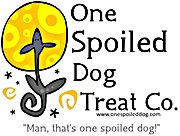Introduction
Jerky treats are a popular choice among dog owners for their convenience, taste, and nutritional benefits. Made from dried strips of meat, poultry, or fish, these treats can be a valuable addition to a dog’s diet when used appropriately. While they offer several advantages, understanding how to choose and incorporate them into your dog’s diet is key to ensuring your pet enjoys their benefits safely.
What Are Jerky Treats?
Jerky treats are dog treats made by drying or dehydrating meat to preserve it and enhance its flavor. They come in various forms, including beef, chicken, turkey, fish, and even exotic meats like venison. Compared to other types of dog treats, jerky often contains fewer ingredients, making it a more natural option for rewarding your pet.
Nutritional Benefits of Jerky Treats
-
High Protein Content
Jerky treats are rich in protein, which is essential for muscle maintenance and repair. Protein also provides dogs with the energy they need for daily activities, making jerky an ideal treat for active or working dogs. -
Low in Carbohydrates
Since jerky is made primarily from animal protein, it is naturally low in carbohydrates. This makes it a suitable treat for dogs on low-carb or grain-free diets, especially those who may be prone to weight gain or carbohydrate sensitivities. -
Minimal Ingredients
Many jerky treats are made with only one or two ingredients, such as dried meat and natural preservatives, making them a simple and clean option. This lack of fillers and additives reduces the risk of allergic reactions and digestive upset.
How Jerky Treats Can Support a Dog’s Health
-
Training Rewards
Jerky treats are highly palatable, making them an excellent choice for positive reinforcement during training. Dogs are often more motivated to learn new commands or tricks when rewarded with a tasty, meat-based treat. -
Promoting Healthy Teeth and Gums
Chewing on jerky treats can help support dental health by reducing plaque buildup and massaging the gums. While not a replacement for regular dental care, jerky treats can contribute to keeping your dog’s mouth cleaner. -
Supporting Weight Management
The high protein content in jerky treats helps dogs feel fuller for longer, which can aid in controlling their appetite and preventing overfeeding. When used in moderation, jerky treats can be a useful part of a weight management plan.
Choosing the Right Jerky Treats for Your Dog
-
Avoid Artificial Ingredients
It’s important to choose jerky treats that are free from artificial preservatives, colors, and flavors. Natural jerky made from high-quality meat ensures your dog is getting a nutritious treat without harmful additives. -
Look for Single-Ingredient Options
Single-ingredient jerky treats, made from just one type of meat, are ideal for dogs with allergies or food sensitivities. They offer a pure source of protein without the risk of hidden allergens. -
Consider Allergies and Sensitivities
If your dog has known allergies, be cautious when selecting jerky treats. Opt for novel protein sources like duck, rabbit, or venison if your dog is allergic to common proteins such as chicken or beef.
Potential Risks and Precautions
-
Overfeeding Concerns
While jerky treats are healthy, overfeeding can lead to excessive calorie intake, which may contribute to weight gain. Moderation is key—treats should make up no more than 10% of your dog’s daily caloric intake. -
Quality and Sourcing Issues
Some jerky treats, especially those imported from countries with lower quality control standards, may contain harmful contaminants. Choose treats from reputable brands that source high-quality, human-grade meat and follow strict safety standards. -
Avoiding Jerky Treats with Added Salt or Sugar
Excessive salt or sugar can be harmful to dogs, leading to health issues like hypertension or diabetes. Read labels carefully to ensure the jerky treats do not contain added salt, sugar, or other harmful additives.
How to Incorporate Jerky Treats into Your Dog’s Diet
-
As Occasional Rewards
Jerky treats should be given occasionally to avoid disrupting your dog’s regular diet. Use them sparingly as a high-value reward for good behavior or training accomplishments. -
For Training Sessions
Break jerky treats into smaller pieces to make them last longer during training sessions. This allows for frequent rewards without adding too many extra calories. -
As Part of a Balanced Diet
While jerky treats are nutritious, they should not replace your dog’s regular meals. Instead, use them to complement a balanced diet that includes high-quality dog food with all the essential nutrients.
Conclusion
Jerky treats can play a valuable role in your dog’s diet, offering high protein content, dental benefits, and a natural option for rewarding good behavior. To maximize their benefits, choose high-quality jerky treats with minimal ingredients, use them in moderation, and ensure they complement your dog’s regular diet. With the right approach, jerky treats can contribute positively to your dog’s health and happiness.





